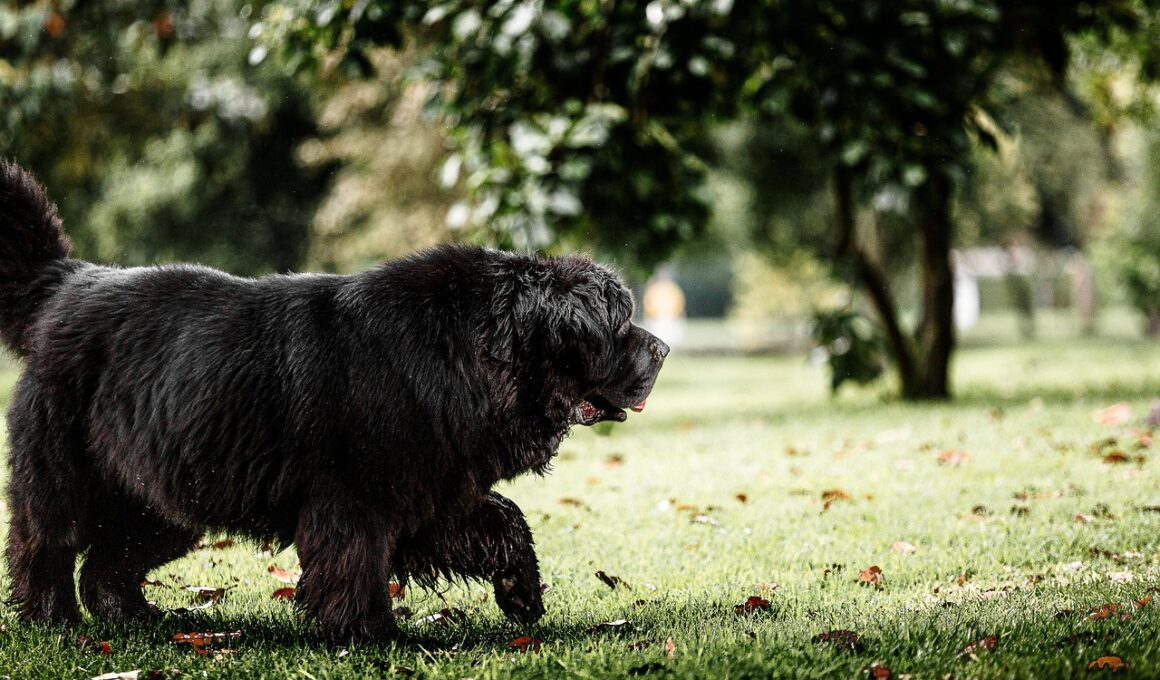Keeping Kids Safe Around Large or Strong Dogs
Ensuring the safety of children around large or strong dogs requires understanding and proactive measures. It is crucial for parents to actively supervise any interaction between their children and dogs. Children may not always recognize the boundaries necessary for safe play. Start by educating them on how to approach dogs gently and respectfully. Teaching children to ask for permission before petting a dog is essential. All interactions should be based on trust; hence, familiarize children with a dog’s body language, helping them recognize when a dog is comfortable or stressed. When in uncertain environments, always supervise play. Professional dog trainers suggest using controlled introductions for dogs and children. Gradually allow short supervised interactions, allowing the dog to dictate the pace. This safe approach helps both the child and the dog feel comfortable. Parents should also know their dog’s temperament and history with kids. Understanding your dog can prevent mishaps and reassure parents of the dog’s behavior around children. Implementing safety rules when interacting with various breeds can significantly mitigate risks, fostering a positive atmosphere for both kids and dogs, ultimately leading to joyful experiences and safe interactions.
One of the most significant aspects of mixing children with large or strong dogs is proper socialization training for the dog. Dogs that are well-socialized tend to respond better to various situations and behave appropriately. Start early with socialization, exposing the dog to children of all ages in various environments. This should be done in a controlled and positive manner. Arranging playdates with familiar, calm children can create a positive association between kids and dogs. During these introductions, observe the dog’s behavior closely. Look for signs indicating distress or excitement, such as barking, wagging tails, or tense body language. Ensure that the dog has time to acclimate to noisy or energetic children. Additionally, provide children with guidelines about interacting with the dog. Teach them to be gentle and to avoid sudden or loud movements. Positive reinforcement training methods should be employed to reward good behavior in both the dog and the child. With proper guidance and supervision, dogs can thrive in a child-friendly environment, allowing families to enjoy the companionship that dogs offer. This proactive approach prevents accidents and builds lasting bonds.
Recognizing Dog Behavior
Understanding dog behavior is crucial for creating safe interactions between children and large dogs. Children should learn to recognize the signs of a dog’s mood. Dogs communicate through body language, and certain behaviors can indicate their comfort level. A relaxed dog may have its tail wagging and exhibit soft, relaxed ears. Conversely, when dogs are anxious, their bodies may become tense, ears pinned back, tails low, or they may back away. These signs are hints that a dog is feeling overwhelmed or fearful. In such instances, instruct children to give the dog space and avoid forcing interaction. Kids should understand the importance of consent from dogs, just like they would with people. Remind them that not all dogs are friendly, and some dogs may prefer to interact at a distance. Teaching children to respect these boundaries can significantly reduce the chances of negative encounters. Furthermore, having a designated quiet space for the dog at home can help them retreat when they need time away from the chaos of children’s activities. This sanctuary plays a vital role in maintaining the mental well-being of the dog.
As part of promoting safe interaction, parents should select the right environment for children and dogs to meet. Open spaces, such as parks, can provide ample room for a dog to freely move, reducing the chances of accidental bumps or rough play. When dealing with large dogs, set the stage for positive interactions. Avoid crowded or chaotic situations where children might overwhelm the dog. Maintain a calm demeanor yourself, which can help instill a sense of calm in children. Minimize distractions to focus on the budding relationship between the child and the dog. Utilize leashes as necessary, especially for new introductions. This control helps the adult supervise the interaction while ensuring the dog remains safe. Encourage children to toss treats or toys for the dog to promote positive engagement. Rewarding dogs with treats while interacting with children reinforces positive behavior, establishing a joyful bond. Remember that safety should always come first, and having a proper structure allows these encounters to be memorable and enjoyable. As understanding grows, both children and pets will learn to coexist peacefully while having fun together.
Implementing Safety Rules
Establishing safety rules for children interacting with strong or large dogs is essential in a home environment. Clear guidelines help protect both children and dogs. First, teach children to approach dogs calmly. Encourage them to speak softly and use appropriate body language. Children should know to avoid meeting a dog face-to-face directly, as this can be intimidating for dogs. Instead, instruct them to allow the dog to approach them first while keeping hands at their sides until the dog initiates contact. Another essential rule is teaching children when to leave the dog alone, particularly during mealtimes or when the dog is sleeping. Creating a safe distance during these times can prevent potential issues. It is also wise to educate children regarding the importance of not disturbing dogs when they’re in their designated space. Reiterate that some breeds may have different tolerances than others; thus, respecting these limits is critical. Encourage children to communicate successes in their interactions with dogs to reinforce positive behavior. A structured environment fosters trust among all parties involved, and clear rules provide a clear path to safe playtime.
When bringing a dog into a family with children, consider seeking professional help to monitor interactions and provide guidance. Every dog has a unique temperament, and professionals can assess how a specific dog behaves around children. They can offer customized training advice tailored to your family’s needs. Dog trainers often suggest basic trick training for dogs as a bonding experience with children. Educating children about providing obedience commands can lead to a sense of responsibility, making them feel like part of the dog’s training process. Encouraging regular, structure-oriented sessions can develop a harmonious relationship between children and their canine companions. Additionally, observe any changes in behavior over time, as consistent training leads to long-term safety. Remember to praise dogs for good behavior when children are around. This builds a positive atmosphere and encourages both children and dogs to foster respect and friendship. Engaging families in training sessions can enhance the dog’s reliability around children. Regular routines, reinforced by training, can set the foundation for a wonderful relationship. Ultimately, combining all these strategies creates an enjoyable environment for both dogs and children.
Conclusion and Encouragement
In conclusion, ensuring children’s safety around large or strong dogs involves education, monitoring, and structure. Understanding dog behavior, engaging in proper training, and establishing clear safety rules are vital steps to foster a secure environment. Always prioritize the individual temperament of the dog and the comfort of both children and pets. Close supervision of interactions creates opportunities for positive experiences. Encourage children to foster an empathetic relationship with dogs, teaching them the importance of compassion. By actively engaging with their canine companions, children can develop essential social skills and emotional intelligence. Family cohesion improves as children learn to navigate the emotional landscape of both dogs and humans. With patience, practice, and positive reinforcement, dogs can become trustworthy members of the family. Create lasting memories through shared experiences between kids and dogs, celebrating victories. Reinforce the idea that a safe atmosphere leads to a happier relationship. By recognizing the needs and signs of both dogs and children, family dynamics thrive. Commitment to safety ensures everyone can enjoy companionship and fun with their furry friends. Ultimately, building love and trust between children and large dogs create an excellent opportunity for lifelong friendships.
This is a final paragraph to sum up the importance of maintaining safety when teaching children how to interact with dogs safely.


